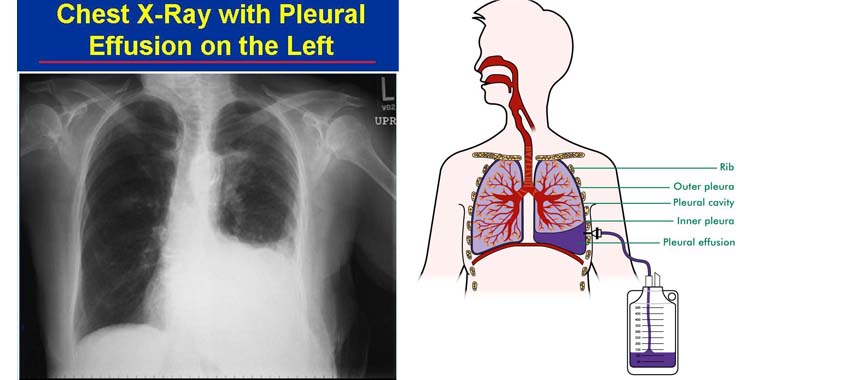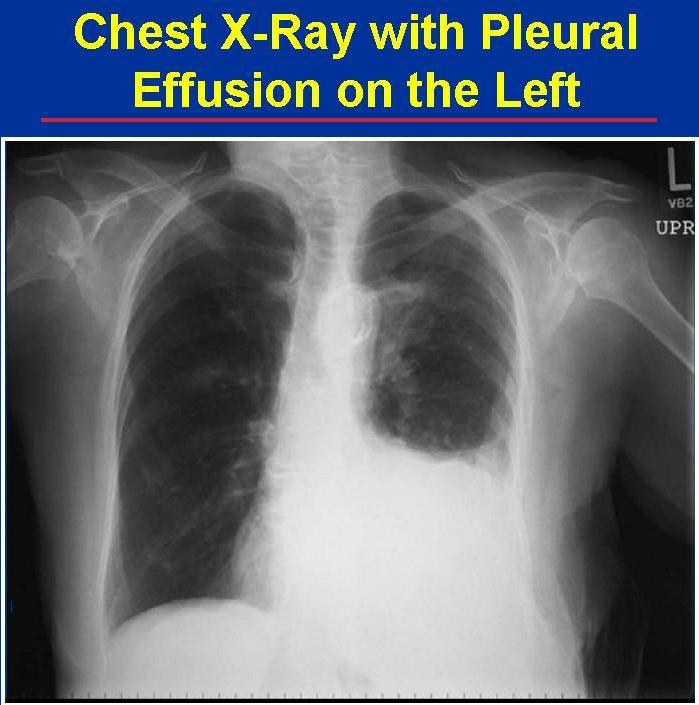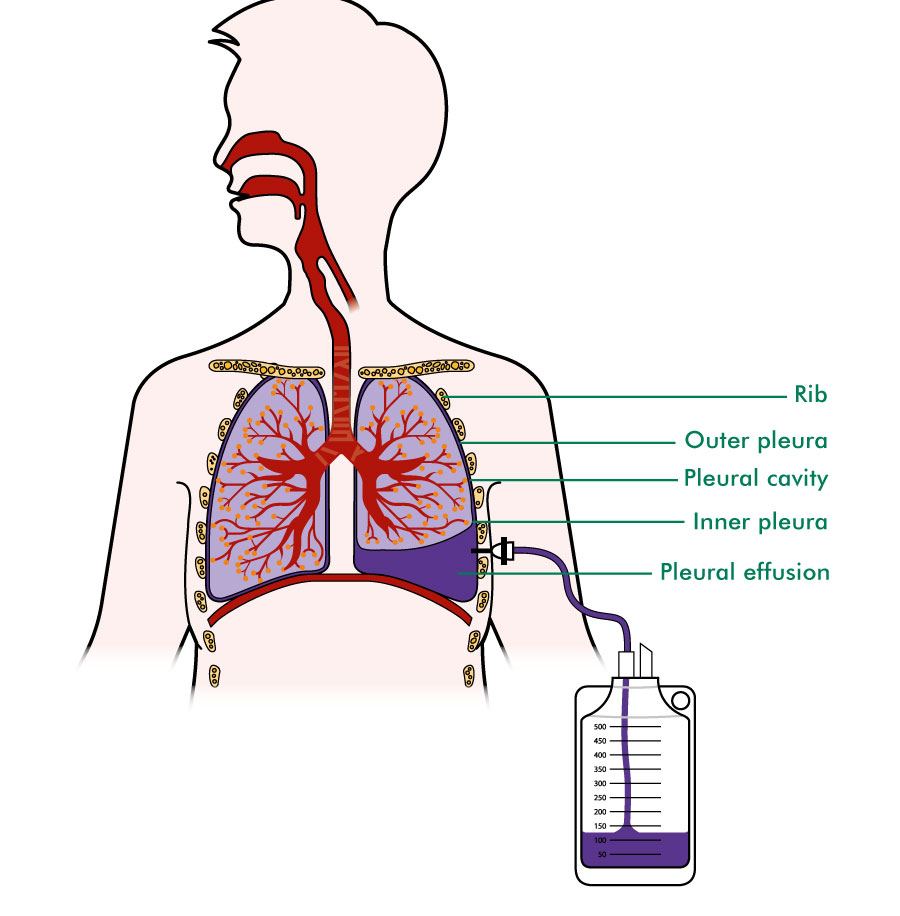
Pleural Effusion
Introduction
A pleural effusion is a buildup of fluid between the layers of tissue that line the lungs and chest cavity.
Causes
Your body produces pleural fluid in small amounts to lubricate the surfaces of the pleura, the thin tissue that lines the chest cavity and surrounds the lungs. A pleural effusion is an abnormal, excessive collection of this fluid.
There are two different types:
• Transudative pleural effusions are caused by fluid leaking into the pleural space. This is caused by increased pressure in the blood vessels or a low blood protein count. Congestive heart failure is the most common cause.
• Exudative effusions are caused by blocked blood vessels or lymph vessels, inflammation, lung injury, and tumors.
Symptoms
• Chest pain, usually a sharp pain that is worse with cough or deep breaths
• Cough
• Fever
• Hiccups
• Rapid breathing
• Shortness of breath
Sometimes there are no symptoms.
Diagnosis
Your doctor or nurse will examine you and listen to your lungs with a stethoscope.
The following tests may help to confirm a diagnosis:
• Chest CT scan
• Chest x-ray
• Kidney and liver function blood tests
• Pleural fluid analysis (examining the fluid under a microscope to look for bacteria, amount of protein, and presence of cancer cells)
• Thoracentesis (a sample of fluid is removed with a needle inserted between the ribs)
• Ultrasound of the chest and heart

Treatment
The goal of treatment is to:
• Remove the fluid
• Prevent fluid from building up again
• Determine and treat the cause of the fluid buildup
Removing the fluid (thoracentesis) may be done if there is a lot of fluid and it is causing chest pressure, shortness of breath, or other breathing problems, such as low oxygen levels. Removing the fluid allows the lung to expand, making breathing easier.

The cause of the fluid buildup must be treated, too.
If it is due to congestive heart failure, you may receive diuretics (water pills) and other medications to treat heart failure.
Pleural effusions caused by infection are treated with antibiotics.
In people with cancer or infections, the effusion is often treated by using a chest tube for several days to drain the fluid.
Sometimes, small tubes can be left in the pleural cavity for a long time to drain the fluid. In some cases, the following may be done:
• Chemotherapy
• Putting medication into the chest that prevents fluid from building up again after it is drained
• Radiation therapy
• Surgery
Prognosis
The expected outcome depends upon the underlying disease.

Possible Complications
Complications may include:
• Lung damage
• Infection that turns into an abscess, called an empyema, which will need to be drained with a chest tube
• Pneumothorax (air in the chest cavity) after thoracentesis
The information provided herein should not be used during any medical emergency or for the diagnosis or treatment of any medical condition. A licensed physician should be consulted for diagnosis and treatment of any and all medical conditions.
References:
uptodate.com
Fishman's Pulmonary Diseases and Disorders







